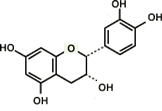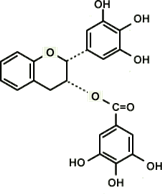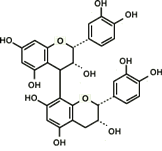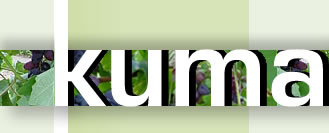What are Proanthaocyanidins?
Proanthocyanidins(tannins) are present in plants as complex mixture of polymers with an average degree of polymerization between 4 and 11, usually in association with monomers (Fig. 1). Smaller-sized proanthocyanidins of 2 to 6 monomers are referred to as oligomeric proanthocyanidins(oligo- means little, few or scant) (Fig. 2).
Polymeric proanthocyanidins are also called condensed tannins. They are astringent and their astringency increases as the number of polymerization increases. Large molecule proanthocyanidins are extremely astringent and this helps the plants that produce them fend off insects and animals. When their leaves are bitten by insects or broken by humans, the plants respond to it by producing more proanthocyanidins.
The astringency of tannins stems from their proclivity to form complexes with other macromolecules including proteins, carbohydrates, minerals and so on. When large molecular tannins come into contact with proteins in the saliva (mostly prolin residues), they form water-insoluble complexes that precipitate on the surface of the tongue, which is what astringency is. When the size of the tannin increases to extreme levels, the astringency paradoxically disappears. This is because the size of the tannin is now too big to penetrate the protein molecules, precluding the formation of cross linkage between the tannin and peptide chains.
In some parts of the world where persimmons are as common as apples in the northern US, it is a common practice among the local people to turn astringent persimmons into sweet ones by simply keeping the fruits under lukewarm water overnight. Dr. Tanaka in Japan, who is an authority on tannins, discovered that this phenomenon could be explained by extreme polymerizations of tannins in the fruits and identified the anoxic condition the fruits are subjected to as the driving force behind this polymerization.
This complex-forming nature of tannins is traditionally utilized in wine making. Wine has abundant tannins that come from grape skins, seeds and stems. During the fining stage of the operation, a protein such as egg white, gelatin or fish glue is added to the wine. As the tannins complex with this protein, all the particles in the wine are incorporated into this flocculent complex. When this complex is swept away, a clear and deposit - free wine is born. The consequence of this is loss of tannins for the wine. Tannins are therefore added before or after this fining stage to keep the gustatory balance of the wine.
Proanthocyanidins were originally extracted by Dr. Masquelier from the bark of the French maritime pine. He had read the book on the expedition of American Continent in 1534 authored by explorer Jacques Cartier. When Cartier's crew were trapped in ice and came down with scurvy in current Coebec Canada, the local Indians showed them how to treat the condition with the tea brewed from the local pine bark and needles.
Dr. Masquelier conducted intensive biological, toxicological and pharmacological researches on the compound he extracted from the pine bark and characterized it as an antioxidant. Later he also found a same compound in grape seeds.
Grape seed extracts are now marketed in France as an over the counter medicine, Endotelon, as a protector of blood vessels. In the US, grape seed extract as an additive to drinks, snacks and food was granted a GRAS (Generally Recognized As Safe) status by FDA in 2003(GRAS Notice No.GRN000124).
Main food sources of proanthocyanidins are fruits and vegetables ( see "About This Product"). According to one estimate using the United States Department of Agriculture 1994-1996 Continuing Survey of Food Intake by Individuals, per capita consumption of total proanthocyanidins and total monomeric proanthocyanidins is approximately 500 mg/day and 220 mg/day respectively.
Because of the complexity of the molecules and difficulty in purifying sufficient amount of each variety, only a limited number of studies is available on the bioavailability of proanthocyanidins. According to one study, the dimers and trimers, of which grape seed extracts primarily consist, were absorbed to a similar extent as (+)-catechins. They were distributed through the system in 30 minutes after ingestion. Larger polymers that pass into the colon unaltered are degraded by the colonic microflora into short chain fatty acids and absorbed.
Copyright 2006 Kuma.us





